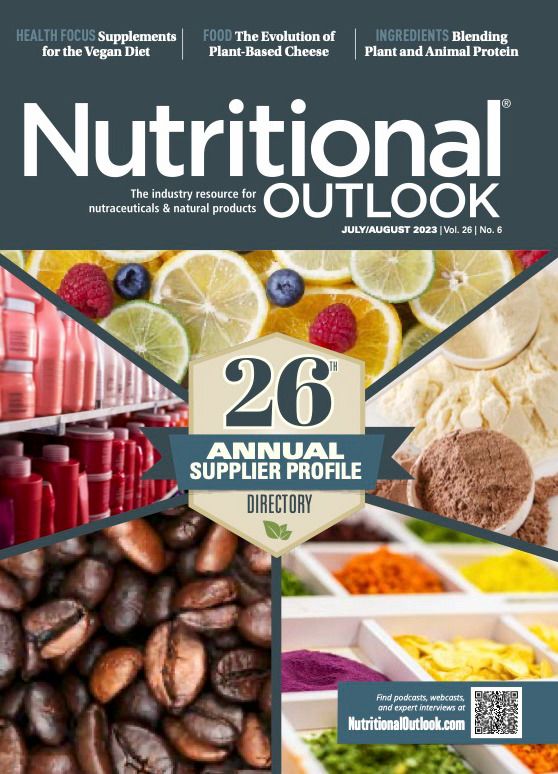Prebiotics are no longer “niche” in Asia-Pacific
Market research shows that the Asia-Pacific market is one of the fastest-growing prebiotic sectors, writes David Mharakurwa of Clasado Biosciences.
The gut health category, powered by rising consumer demand around the globe, is becoming one of the most prominent drivers of product innovation in the nutrition sector. This shift becomes even more apparent in the APAC market, which largely tends to be a “follower” in nutritional market trends, covered by a base of established traditional medicines. To break through, new product innovations typically go through a tempering outside the market before the traction takes grip across the Asian health and nutrition segment.
Market research consistently shows that the Asia-Pacific market is one of the fastest-growing prebiotic sectors. A Grand View Research report projects a very strong 15.6% compound annual growth rate (CAGR) for the region to 2028.1 The report cites rising gut health problems, matched with increasing demand for “preventative” health products in the markets of India, China, and Japan, as a key driver in pushing the prebiotic sector forwards.
David Mharakurwa

Interestingly for brands operating internationally, rapidly emerging economies such as Vietnam, Indonesia, and Thailand are seeing strong growth in the wider dietary supplements sector. Vietnam, for example, is predicted to showcase a CAGR of 11.4% to 2027, according to intelligence firm Makreo Research and Consulting, which marks it as a particularly abundant area of opportunity.2
In addition, growing understanding of digestive health has brought about a new age of microbiome awareness and as a result is propelling prebiotic fiber from a niche functional ingredient to a more widely accepted mainstream product. This changing attitude can be seen in global media coverage and social media discourse, where consumers are learning more about gut health, sharing their own experiences, and hearing from nutritionists and dietitians. As a result, the topic of gut microbiome health is on its way to multigenerational cut-through, providing valuable opportunities for nutrition brands and their formulators.
At the core, consumers are better understanding the important role of gut bacteria in supporting health, and prebiotic fiber, which nourishes beneficial bacteria, provides a natural focal point.
Market statistics certainly back up this growing consumer interest. Grand View Research expects the global prebiotics market to grow at nearly a 15% CAGR, reaching a projected value of $21.2 billion by 2030.3
As consumer demand for prebiotics escalates, more formulators are exploring the potential of prebiotics in new product development. In a similar pattern to that seen in probiotics a decade ago, there is clear movement to be seen. But what is driving this change, and why are consumers leading such strong market potential for prebiotics?
Consumers Trusting Their Gut
An important part of this rising consumer awareness is proactive education. Across the Asian market, reflecting a similar change seen globally, consumers are getting better connected with matters of health. The focus is on supporting better everyday health, not simply fixing health issues when they arise.
The key is the gut microbiome, the community of microscopic organisms in the gastrointestinal tract. Numbering in the trillions, this community includes bacteria as well as other microbes such as viruses and fungi. Of the bacteria, certain types are known to be particularly beneficial to health, whereas others are not. As the gut is a finite space, the balance of beneficial and non-beneficial bacteria is important, and naturally we aim for more of the good. When speaking on gut health, it is usually the diversity of this composition that we are referring to.
Changing consumer purchase behaviors can also account for considerable growth across the APAC region. Online retail, which accelerated around the globe during COVID-19 restrictions, has made nutritional supplements more accessible than ever. In the Asian market in particular, we have seen significant growth on platforms such as Tmall, Lazada, and Shopee in parallel to direct-to-consumer (D2C) web stores. Reflecting trends seen around the globe, “social selling” and influencer marketing through social media platforms are accelerating the expansion of the dietary supplement category.
Advancing Understanding of Immunity and Sports Nutrition
There is a great deal of potential for formulators in the Asian market to put microbiome health front and center of new product development for gastrointestinal health, immune function, and cognitive health as well as for cardiovascular health and metabolism support.
Immune health, in particular, is a useful point of focus for prebiotic applications. We tend to associate immunity with white blood cells attacking pathogens, but less well known is that around 70% of the immune system is found in the gut. By nourishing immune-supporting bacteria in the gut, prebiotics could play a key role in the future of immune health supplements and products.
As well as supporting everyday health and well-being, immunity is a key consideration in athletic health. Training days lost to illness or events missed can be disastrous for athletes at all levels, from topflight to grassroots and recreational exercisers. Looking further ahead to the future of prebiotics with this in mind, there is enormous scope for sports nutrition products to be formulated around a robust prebiotic ingredient core.
Potential in Cognitive Health
While the science is still being developed and understood, there is also exciting potential to include prebiotics in cognitive- or mental health–supporting formulations.
The gut and the brain have an intrinsic connection. Take, for instance, nausea when worried, or “butterflies in the stomach.” Crucial to understanding this connection is awareness of the gut-brain axis, a bidirectional system of communication between the gut and brain. The brain and gut can send and receive signals to each other through a number of complex pathways such as the central and enteric nervous systems, and, crucially, this means that a better supported gut microbiome can support mental health. Some prebiotics can also help adults cope with stress and relieve milder forms of anxiety.4* (Disclosure: This study was funded in part by our company, Clasado Biosciences.) By extension, prebiotics could play a role in periphery related products, such as sleep-supporting products, which are often linked with mental health and well-being.
Versatility in the Health and Nutrition Mainstream
Rising sales around the world have put prebiotics firmly on the radar for formulators operating in the Asian market, and prebiotic products are capturing consumer attention. As a result, dietary fiber is becoming quickly established and trusted as a way to support gut microbiome–oriented health and well-being. With this acceleration set to continue, it’s clear that prebiotics will leave the niche image behind as the market expands and new product categories come to the forefront.
In addition to the strong consumer-led benefits and the strong scientific backing that underpins the category, prebiotics offer powerful advantages in formulation. As a substrate, dietary fiber is incredibly stable and versatile and can be resistant to a wide range of temperatures, pH, and pressures. This means it can be added to an expansive range of products and applications, and using many different manufacturing processes.
Ultimately, consumers across the globe, including those in the fast-paced Asian health market, are looking for products they can trust. This is where robust scientific backing comes into play. In the burgeoning APAC health and nutrition market, it’s clear that prebiotics are making the leap from niche to mainstream. With extensive market growth buoyed by consumer awareness and sales activation, the stage is set for prebiotic products to continue maturing into the mainstream. For formulators across Asia, the ideal time to explore prebiotic fiber in new product development is now.
About the Author
David Mharakurwa is director of sales, APAC & MEA, for Clasado Biosciences (Berkshire, UK). Clasado is a leading biotechnology pioneer in the development of microbiome science, producing prebiotic ingredients and consumer products aimed at gastrointestinal wellness destined for the food and healthcare sectors.
References
- Grand View Research. Asia Pacific prebiotics market size, share, & trends analysis report by source (roots, fruits & vegetables, cereals & grains), by product, by form, by functionality, by application, by region, and segment forecasts, 2020 – 2028. https://www.grandviewresearch.com/industry-analysis/asia-pacific-prebiotics-market-report
- Makreo Research and Consulting. Vietnam dietary supplements market and outlook to 2027 – Deficiency of vitamin D will spur the growth. Published November 2021. https://www.marketresearch.com/Makreo-Research-and-Consulting-v4231/Vietnam-Dietary-Supplements-Outlook-Deficiency-31161468/
- Grand View Research. Global prebiotics market size, share & trends analysis report by ingredients (FOS, inulin, GOS, MOS), by application (food & beverages, dietary supplements, animal feed), by region, and segment forecasts, 2022-2030. https://www.researchandmarkets.com/reports/3765943/global-prebiotics-market-size-share-and-trends
- Schmidt, K.; Cowen, P.J.; Harmer, C.J.; Tzortzis, G.; Errington, S.; Burnet, P.W.J. Prebiotic intake reduces the waking cortisol response and alters emotional bias in healthy volunteers. Psychopharmacology (Berl). 2015, 232 (10), 1793-1801. DOI: 10.1007/s00213-014-3810-0

Kaneka Nutrients to unveil new consumer research on menopausal women at Vitafoods Europe 2024
April 26th 2024The company will reveal the results of the research that is based on live feedback from 200 menopausal women who took 200 mg per day of Kaneka Ubiquinol over two-months, monitored the effects, and recorded their observations.
Rousselot to showcase new collagen peptide research and targeted solutions at Vitafoods Europe 2024
April 25th 2024The company will be highlighting new research that demonstrates the ability of its Peptan collagen peptide brand to support sleep quality, reduce gastrointestinal discomfort, and enhance skin health, including density, hydration, and elasticity.
